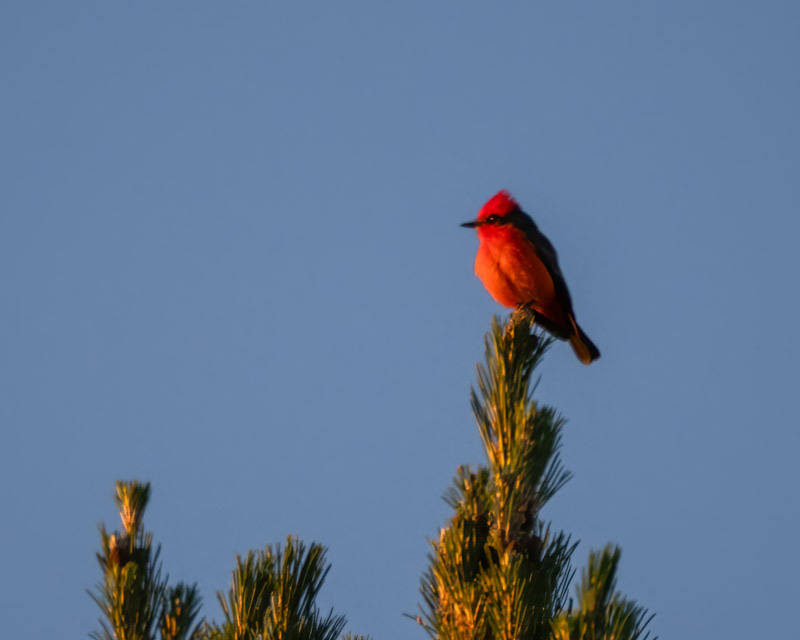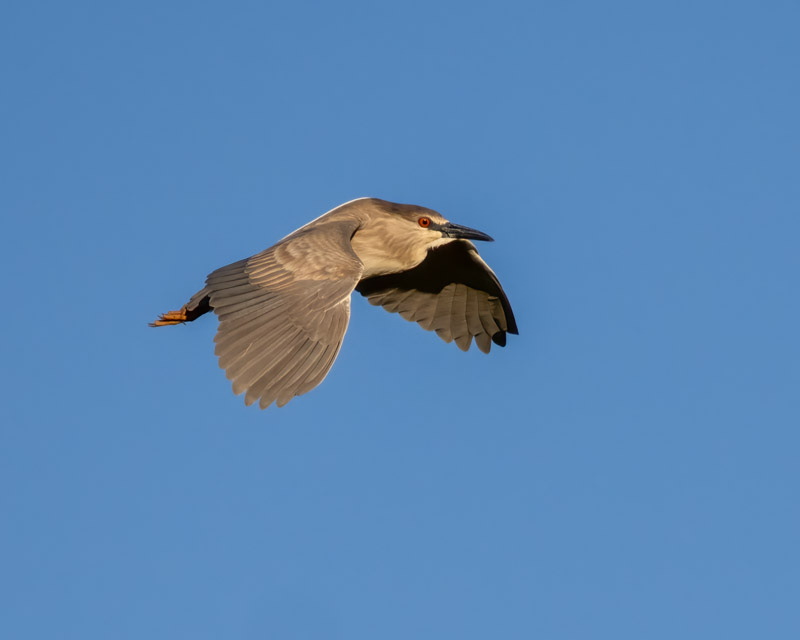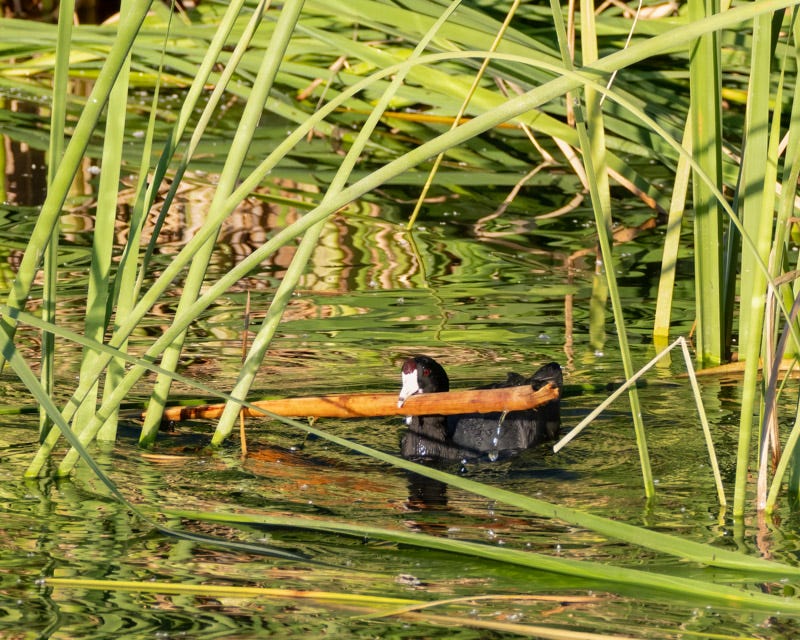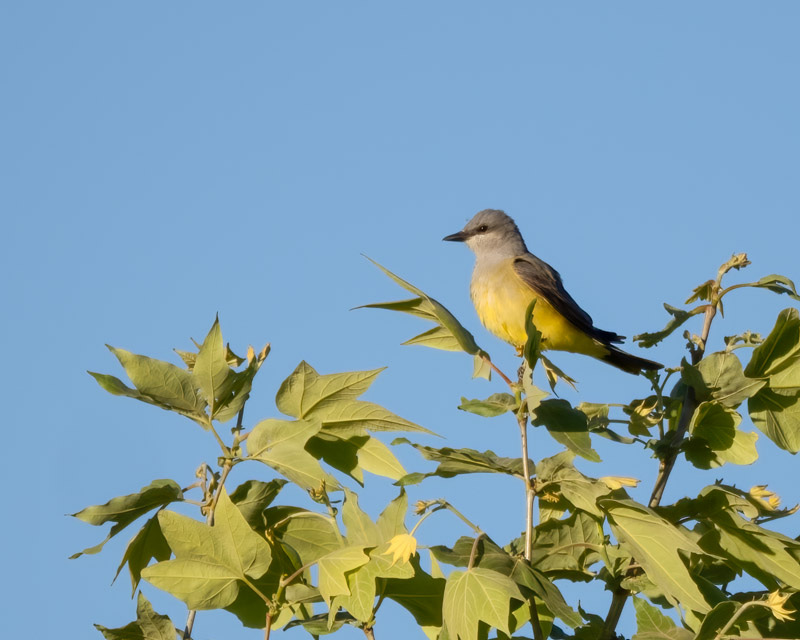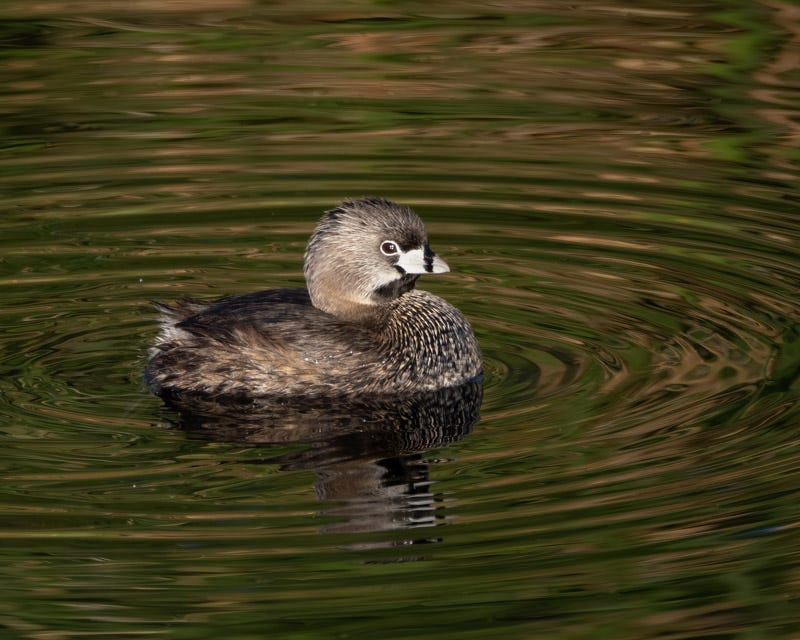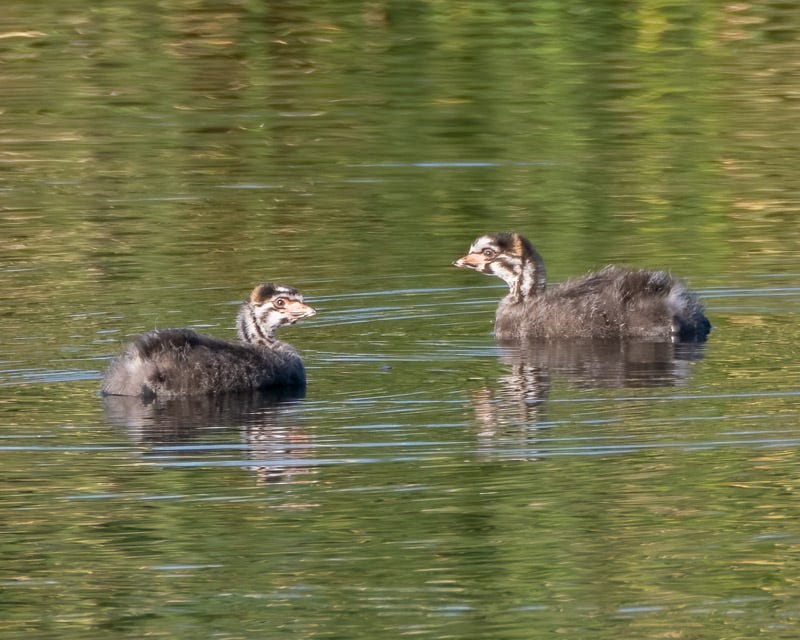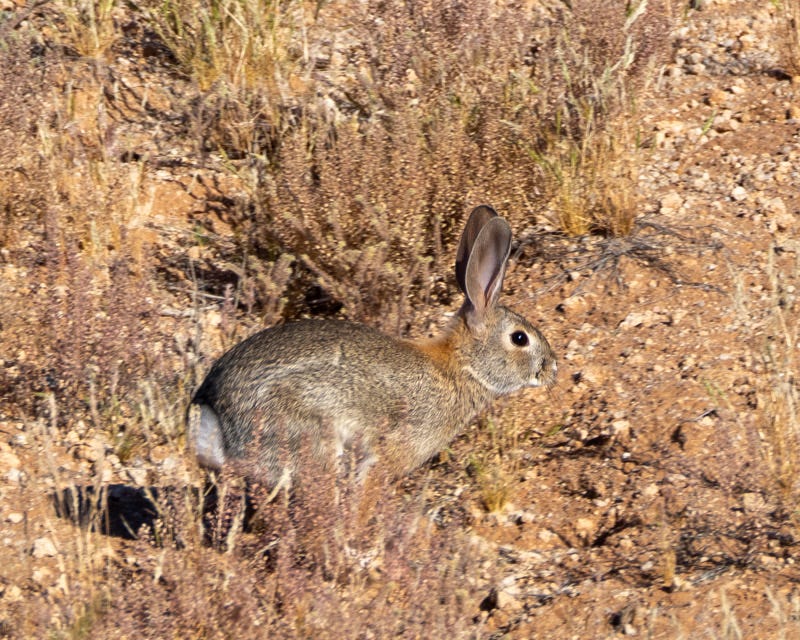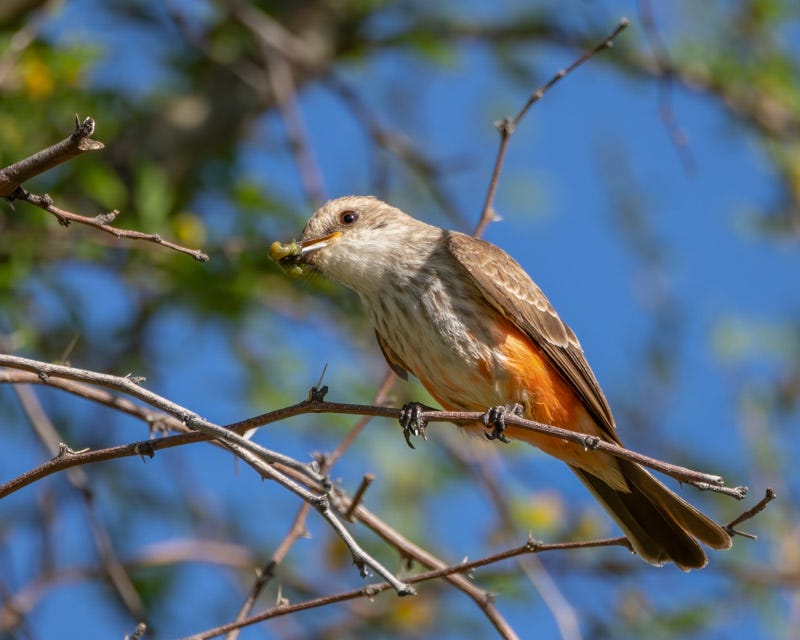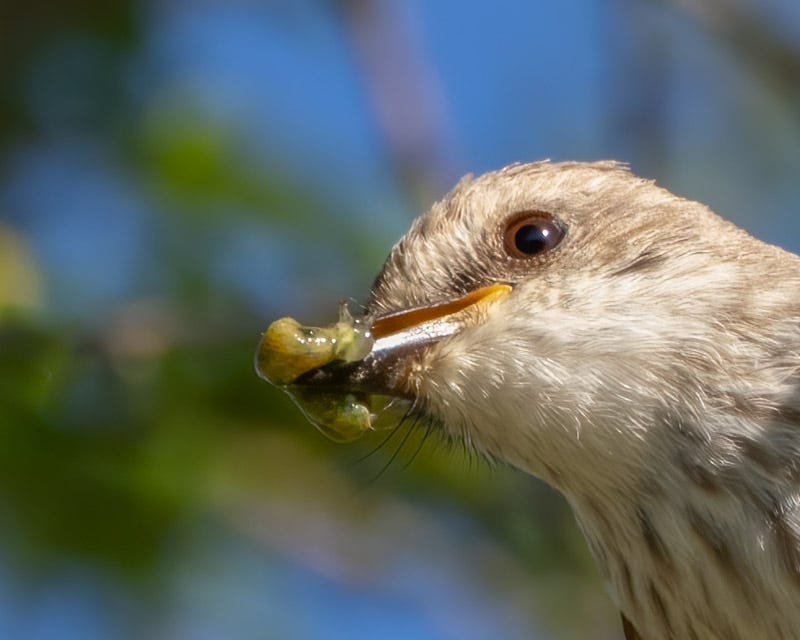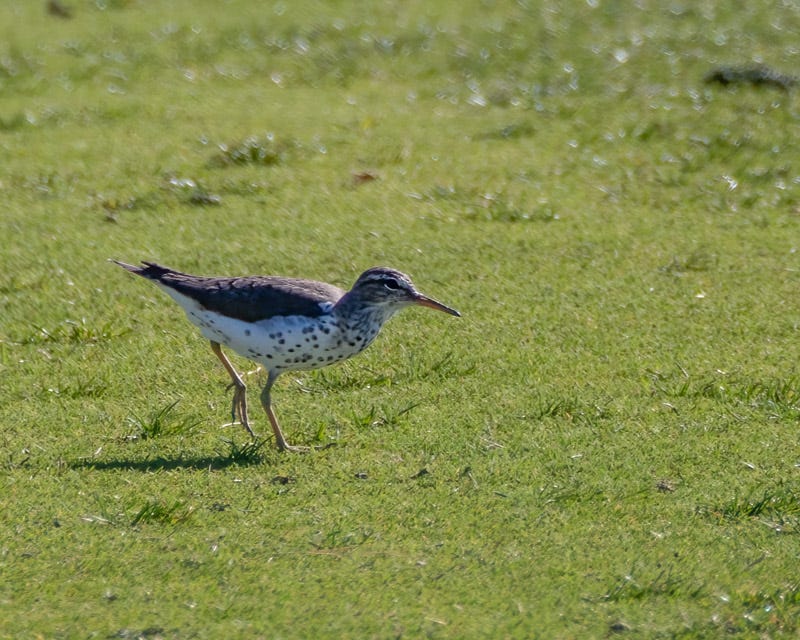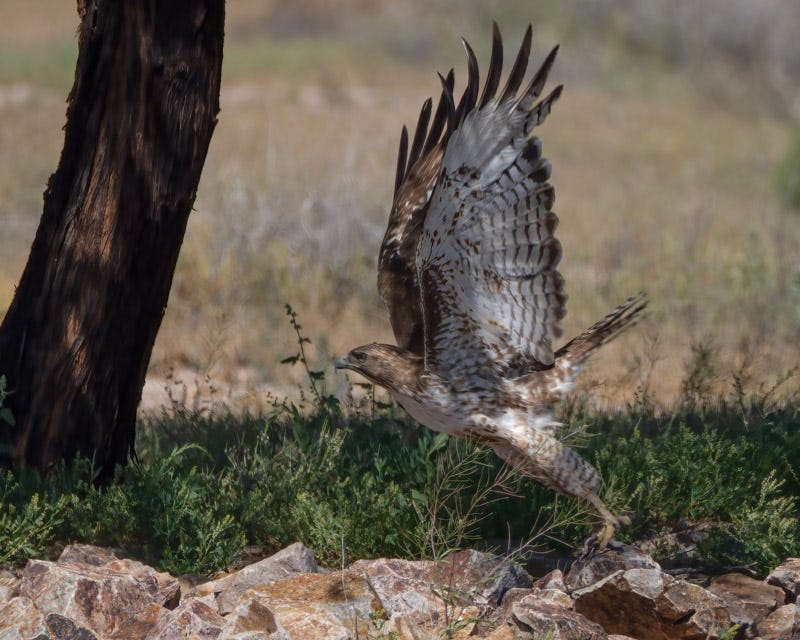Our Birdathon Morning on a Golf Course
What we saw while raising funds for Tucson Audubon
Last week our team spent almost four hours walking the Sewailo Golf Course. The weather was perfect and we had a great morning. We saw 40 species of birds. Many of the wintering birds have left for their breeding grounds up north and many of the summering birds have begun to show up. We were greeted at sunrise with a Vermilion Flycatcher atop the tallest pine tree facing the morning sun.
Early on an immature Black-crowned Night Heron was circling one of the water courses. You can see the long white breeding plume laying across his back. This immature bird's plumage is between its black and white adult plumage and the brown juvenile plumage.
These small Herons look somewhat squat compared to other herons. In flight, they hold their heads back making their necks practically disappear. They have a slow, floating flight.
This American Coot let us know this is breeding season. It was collecting dry reeds to build its nest. Unfortunately, the long reed was too long to fit through the tight spaces between the green reeds. This not-so-bright bird tried several times to swim between the green reeds, only to be blocked time and time again. It finally dropped the brown reed and swam off to grab a different reed.
We saw our first Western Kingbird of the year sitting, as always, on a high perch in order to see insects below.
Pied-billed Grebes are present year-round at Sewailo. This adult has its breeding season plumage with the black neck and the two-toned (pied) beak. The Grebe seemed to circle in one spot, which let us know this bird might be protecting a nearby mud nest.
Nearby a mother Mallard was guiding her nine ducklings up a creek, watching over them closely.
On another pond, two immature Pied-billed Grebes swam together. The plumage at this age makes them look zebra-faced. It's very different looking than what their plain adult plumage will look like.
Cottontail Rabbits frequent the desert next to the course.
Ball fields, school yards, and golf courses are home to many Vermilion Flycatchers in Tucson. This female had caught a juicy treat.
Definitely a juicy treat!!!
We see Spotted Sandpipers at Sewailo throughout the winters. Usually we do not see them in their spotted plumage which is their breeding plumage. Fortunately for us, this Spotted Sandpiper is wearing his summer clothes but has not flown north for the summer yet.
As we headed out from the course a Black-chinned Hummingbird was perched above us.
Right as we reached our cars in the parking lot, a Red-tailed Hawk landed by us. It probably had attempted to grab a ground squirrel. We stopped immediately and waited. After a long 15 seconds, the hawk took off with nothing in its talons. Better luck next time.
Next up, neighborhood Great Horned Owls.
Our birdathon month went well. Thanks to the following new donors for helping Tucson Audubon to spread their good work. Since my last email, we've received donations from Alexa Van B, Susan W, Deanna M, Michelle J, and Jackie N. If you would like to support our team "Birdies, Bogeys, and Eagles", you can make a donation at https://tas.app.neoncrm.com/np/clients/tas/campaign.jsp?campaign=122&fundraiser=12602& Thanks!!


